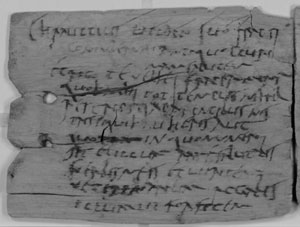By Simona Stoyanova
Working with epigraphic material has always been an interdisciplinary endeavour – involving knowledge of language(s), history, archaeology, palaeography, and increasingly, in the last decade or so, a certain amount of awareness of developments in digital humanities. This is why, after a classical philology degree at Sofia University, I decided to combine further epigraphic practice with dedicated digital humanities training at King’s College London. I have worked on a number of digital epigraphy projects both in London and Leipzig, the main goal of which has been the publication of existing and new corpora of inscriptions, providing users with different pathways through the material, rich indexing and multifaceted browsing based on text encoding in EpiDoc XML. Part of this work has involved training and dissemination of the EpiDoc standard, publishing practices and project management strategies.
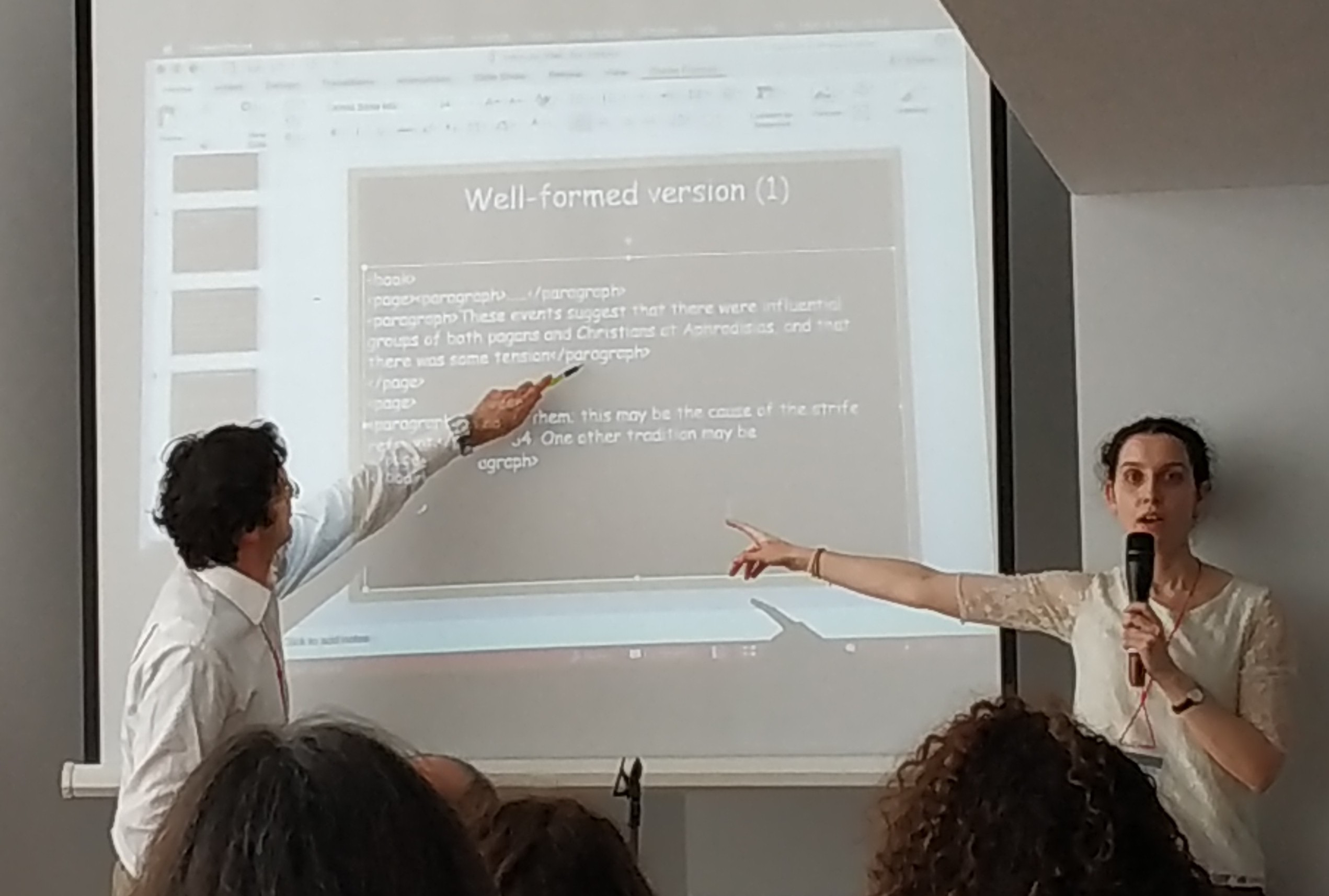
Simona teaching EpiDoc in Palermo
I am very happy to be joining the LatinNow team as a specialist in digital epigraphy. My main responsibility will be managing the epigraphic database assembled by the team, amounting to well over 180,000 files derived from the EAGLE-Europeana project and a range of other sources, including the expanded Roman Inscriptions of Britain online, which is currently having multiple epigraphic corpora added to it (e.g. the Vindolanda and Bloomberg tablets) by Scott Vanderbilt as part of LatinNow. All this epigraphic data will be leveraged for the specific research purposes of LatinNow and will be enhanced with new data produced by the researchers. We are looking to standardise vocabularies for metadata and indexing features, such as type of object, material and dating format, which vary in modern language and expression throughout the corpora we use. We will enrich the information available for local ancient languages and linguistic features, so that we can trace changes in literacy and language use more effectively and consistently. I will be working closely with our developer Scott Vanderbilt and will liaise frequently with the other team members to provide training, help and advice on working with the database. An integral part of my work will be supporting the team in adding sociolinguistic data to our material and facilitating their use of the database following user-experience feedback.
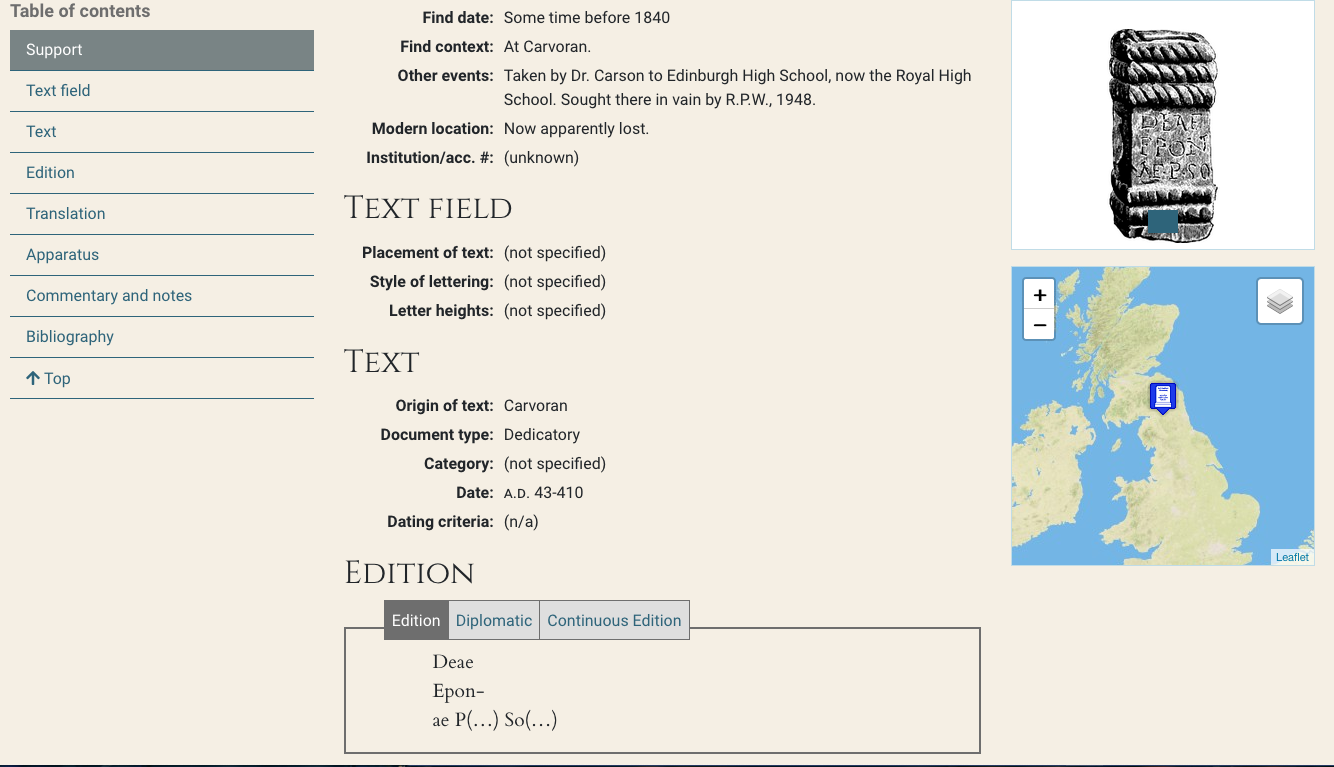
An entry from Scott’s Roman Inscriptions of Britain Online
A very exciting part of this process for me is the use, reuse and further enhancement of already existing digital epigraphic corpora. So far, I have worked on producing such resources rather than mining and manipulating data from them for new research. Reuse and repurposing of open access data forms a key part of sustainability of electronic resources, helps us avoid reinventing the wheel and ensures longevity and wider dissemination of research. We are very grateful to our colleagues from a range of different projects (for example, EAGLE, Hesperia, AELAW) for their invaluable help and generosity.
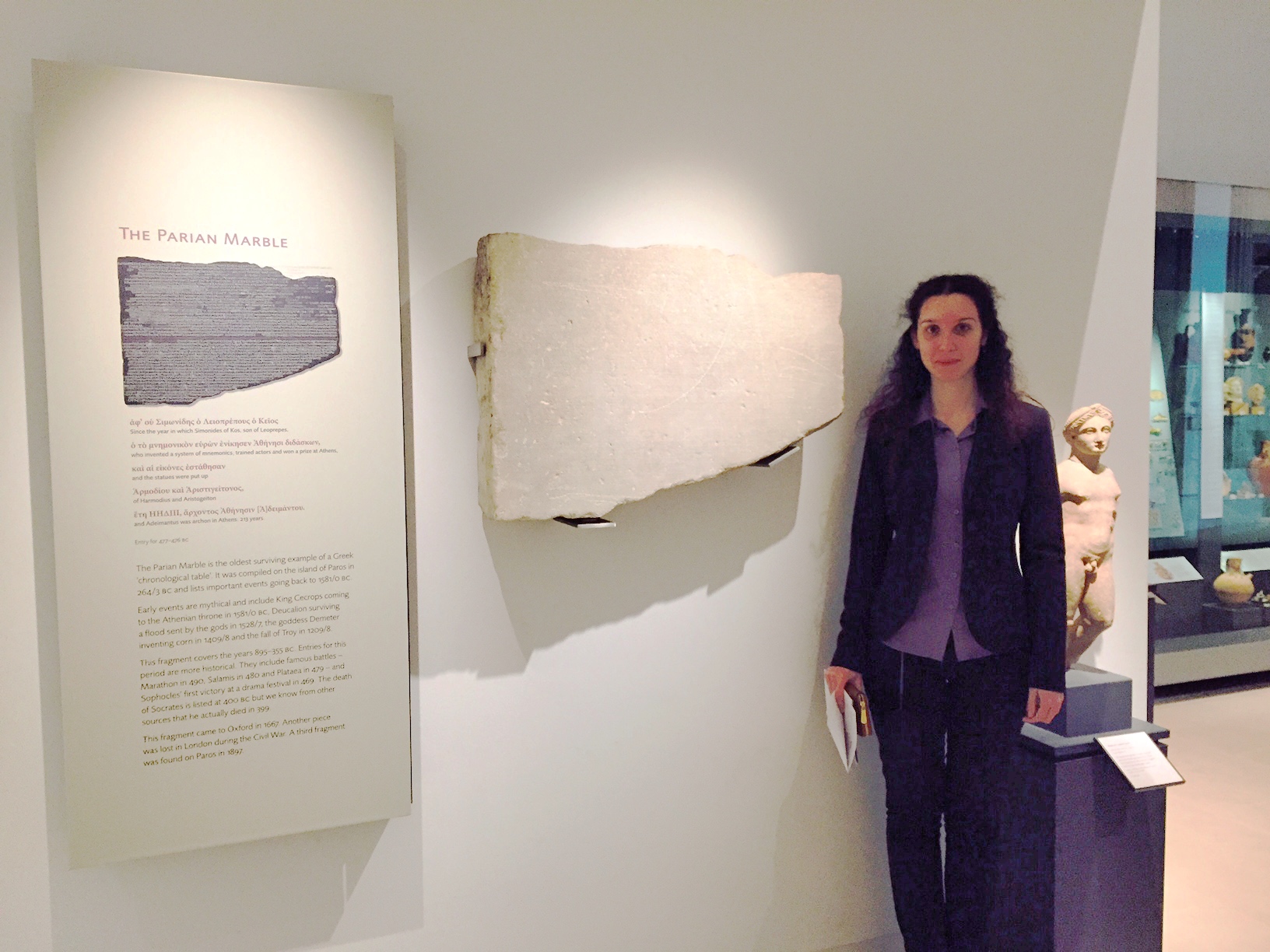
Simona with the marmor Parium
In addition, being part of LatinNow will give me the opportunity to gain experience working on epigraphic material from the western provinces, as my own research and work to date has focused more on the eastern provinces. There are many parallels to be drawn in terms of multilingual competence of local populations, however I am curious to explore the differences and specific sociolinguistic factors in the changes of language use in the west.

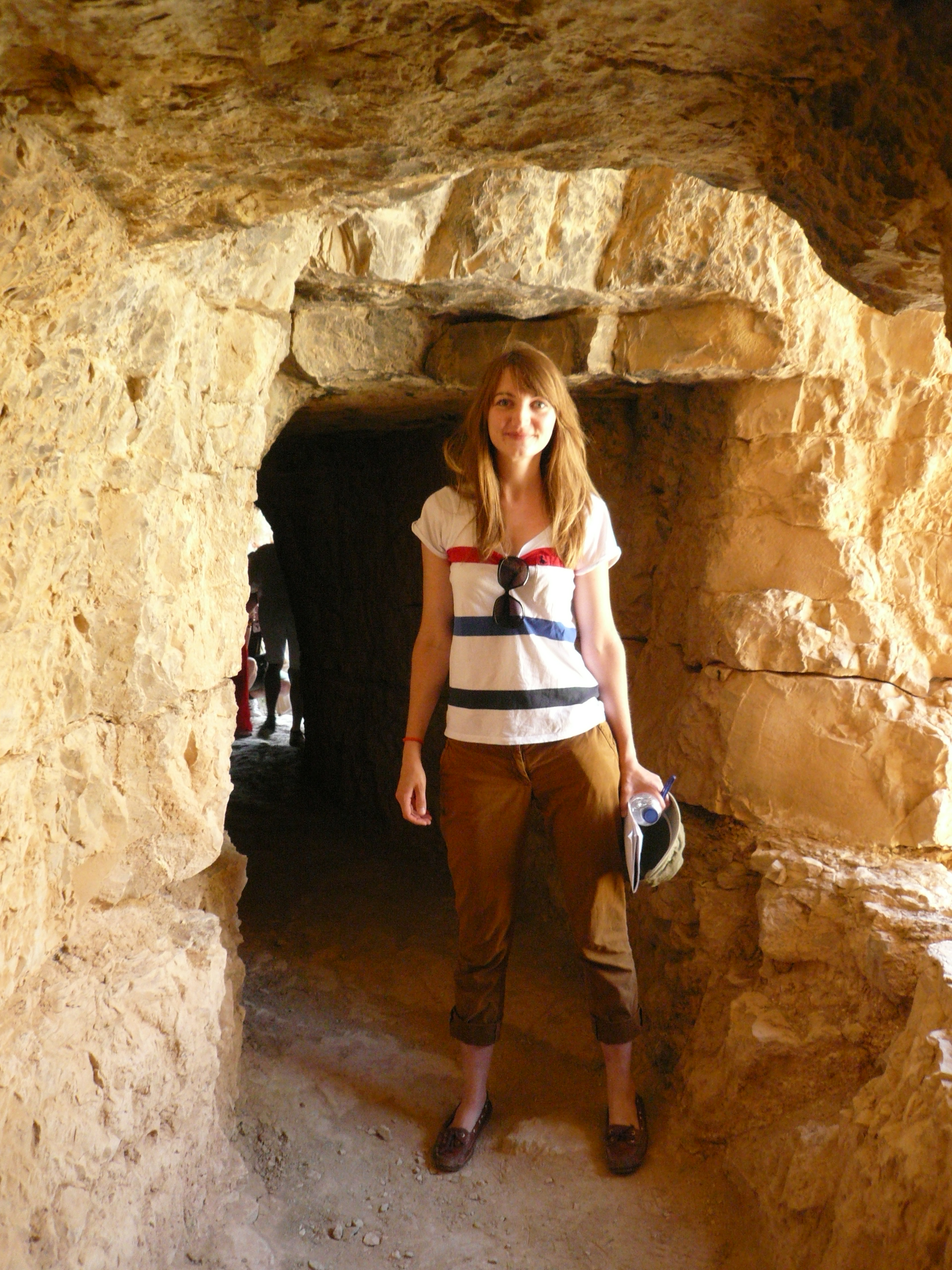
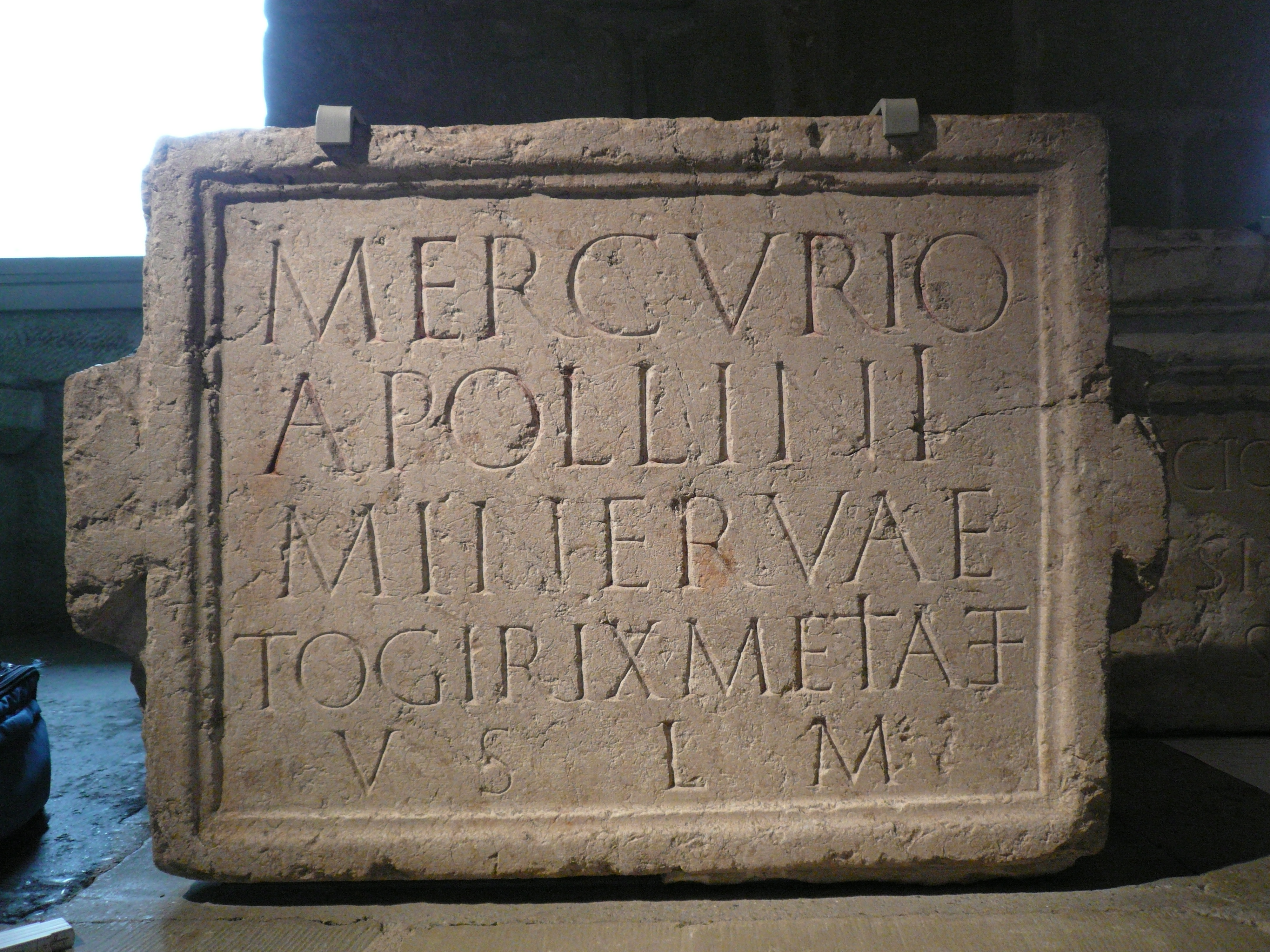
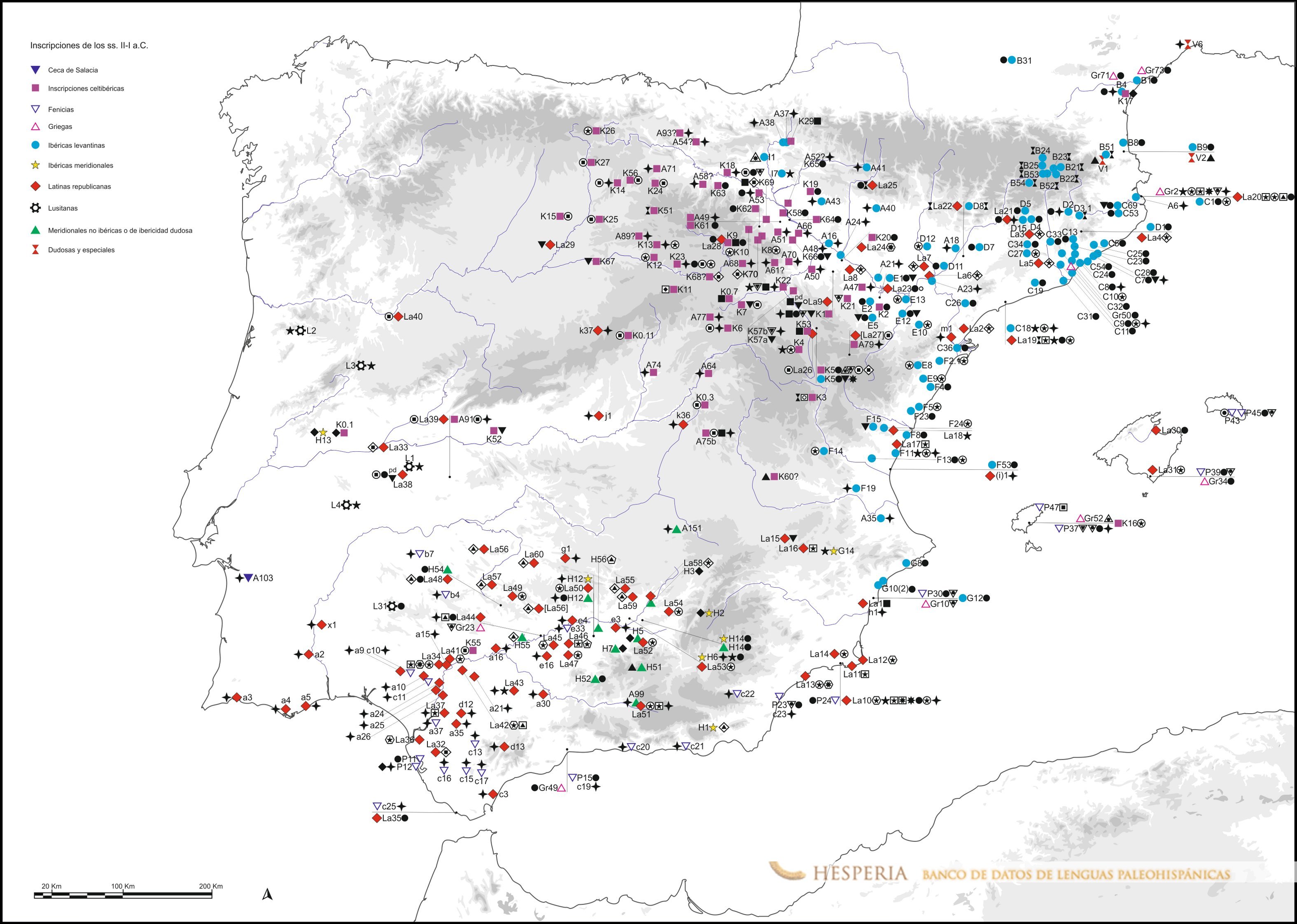 Map from
Map from 